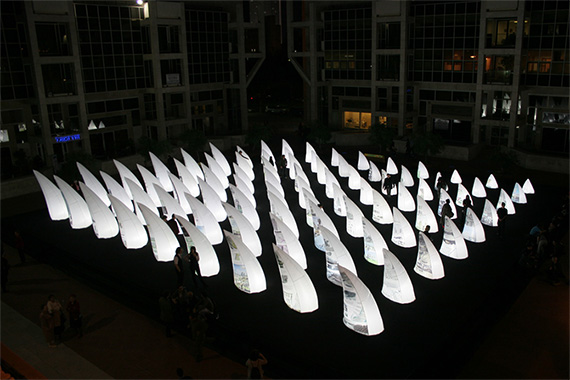
With the advent of the modern sciences and the perception of natural phenomena in terms of indeterminacies, the discipline of architecture has marked a shift from an idealistic expression of the real world to the unleashing of performative systems that reflect its instabilities (Blackmore, 1995; Heisenberg, 1958; Prigogine I. & Stengers I., 1984).(1) This perennial interest to transform the static condition of the architectural model into a system of potentialities has generated many theoretical assumptions. Such assumptions often referred to the nature of living organisms and their ability to stream and generate information (Wiener, 1954).(2) Just to name a few, Patrick Geddes’s “Life-conserving Principles” (1915); Frederick Kiesler’s “Correalism and Biotechniques” (1939); Richard Neutra’s “Survival Through Design” (1954); Superstudio’s “Microevent/Microenvironment” (1972); and Marcos Novak’s “Transarchitecture” (1995).
As the French philosopher Michel Serres asserts, the living organism acts similarly to an open system that can only be assessed rather than defined because of its recombinant qualities (Serres, 1982).(3) It renders a reactive system in quasi-equilibrium where the intense affluence of information, influence of systemic parameters, and confluence of knowledge incessantly erode, reform, and transform its intricate nature. This consideration of the living organism as an information system provided a breeding ground, almost literally, for visionary researchers who did not hesitate to position the architectural object on the same level. In the past 30 years, architects such as John Frazer, Greg Lynn, Marcos Novak, and Karl Chu provided the research community with remarkable results on the potential to embed evolutionary principles at the core of the object. At the same time, critical theorists such as Georges Teyssot, Antoine Picon, and Peter Sloterdijk engaged with defining the consequences of the increasing influence of information technologies on the discipline of architecture. The visionary work of these practitioners and theorists prefigured the digital euphoria of the twenty-first century.
The structure and discourse of “LIFE in:Formation” aim at shedding light on Michel Serres’s three fundamental aspects regarding the nature of information, namely its affluence, influence, and confluence. These three conditions propel today’s informed architecture; a term that accentuates the prevailing role of information assets in the mutation of the architectural object into something that increasingly resembles a sensitive organism. The following introductory essay reviews critical aspects regarding these three conditions in the production of architectural organisms that are profoundly influenced by the inherent intensity, instability, and transdisciplinarity of technology (Sprecher, 2008).